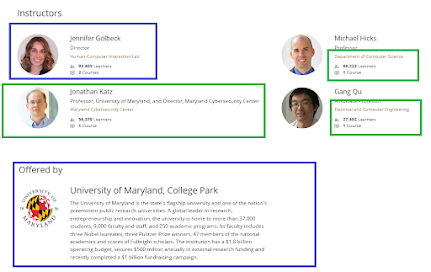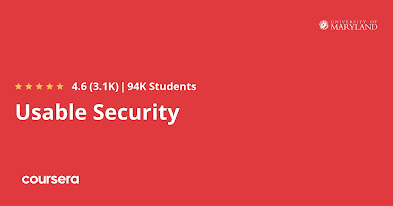Cyber security is the science behind protecting the company's infrastructure, including employees' computers, their network, the servers where they host the web application, and the database of users' information or any sensitive information. They use some tools to assess the security of their infrastructure and to discover new vulnerabilities.
This field, known as cyber security, is one of the most growing and in-demand fields globally. Companies are hiring people for their talent in discovering vulnerabilities and securing their systems more than your degree that you’ve earned from a highly reputable university because hackers nowadays are finding zero-day vulnerabilities and taking advantage of them.Everyone can share his classes, even amateurs who know using the tools but do not understand the concepts behind these vulnerabilities and how they get exploited. Still, I’ve found a course created by experts in this domain from the University of Maryland called Cybersecurity Specialization offered on the Coursera platform.
Is Cybersecurity Specialization on Coursera worth it? Review
Now, let's review this awesome CyberSecurity course and specialization on three main parameters.
Instructor quality, which mean how experienced and expert instructor are teaching these courses, second and most important course structure and content quality, which mean which topics are covered and how well they are covered, and there and most important what peoples are saying about these courses, particularly those who have joined and completed this course.
1. The Instructors Review
The University of Maryland is considered one of the most popular universities in the world. It has a big reputation, and they have created this cyber security specialization by their top professional experts in this field. Some of them are a professor like Michael Hicks and Jonathan Katz to learn about cyber security.2. Course Content and Structure
2.1. Usable Security
This first section of cyber security will focus on building secure systems. You will learn about Human-Computer Interaction, the science that studies the use of computer technology and the usability, tasks, and cognitive models. Then move to the design methodology of securing systems, SSL warning, qualitative evaluation, and running controlled experiments.
Next, you will learn about some strategies for securing interaction design and understand the usable security guidelines, authority guidelines, authorization & communication guidelines.
You will also learn about usable authentication, two-factor authentication that adds an extra layer of security for users, biometric authentication. Finally, understand the functional privacy basics and privacy policies.
2.2. Software Security
This section will teach people the foundation of software security and the most common vulnerabilities. First, you will understand computer and software security, then move low-level security and how they attack them and get exploited. Some of the most common vulnerabilities are memory layout, buffer overflow, code injection.Since you’ve learned how to exploit these low-level attacks, you will learn to protect yourself, such as memory safety and secure coding.
You will move later to web security like SQL injection, where you can pull the data from the database, session hijacking, cross-site scripting. You will also explore secure software development and static program analysis, and penetration testing.
2.3. Cryptography
Cryptography is the science of securing communication between two individuals sending data or files to each other, and guaranteeing that no one else can see the data except these two individuals. You will start this section by learning the basics of encryption, HEx & ASCII, and modern cryptography principles.They then learn the computational secrecy, pseudorandomness, and private-key encryption, like a password used to encrypt the data and files. You will also learn about the message authentication codes like the hash functions and the keys exchange when two people communicate.
2.4. Hardware Security
This section will teach you security from the hardware perspective. So you first learn how the hardware is designed and get an overview of the digital logic design, digital system specification and implementation, sequential system specification, and performance.Next, you will learn how to protect your hardware design legally from being misused by other people and companies and learn the basics of watermarking and fingerprinting.
You will also learn about the physical attack, meaning if your device is in the attacker's hands, how it can harm you, what tools are used for this attack, and what causes them to perform these actions on you.
You will also learn about side-channel attacks and things like cash attacks, power analysis, memory vulnerabilities. You can also use some tools to detect the hardware trojans. You will learn all of that and many other things about hardware security.
2.5. Cybersecurity Capstone Project
This last section will ask the learner to build a system. Then the other people will see their project and try to discover the security flow of their systems. So nothing new to learn here, but you will practice what you’ve learned in the past four courses.Conclusion
That's all about the review of one of the most popular Cyber Security courses on Coursera by the University of Maryland, the Cyber Security Specialization. This 5-course + 1 project program from Courser is really a great resource to start with Cyber Security and become a Cyber Security expert in 2024.






No comments:
Post a Comment